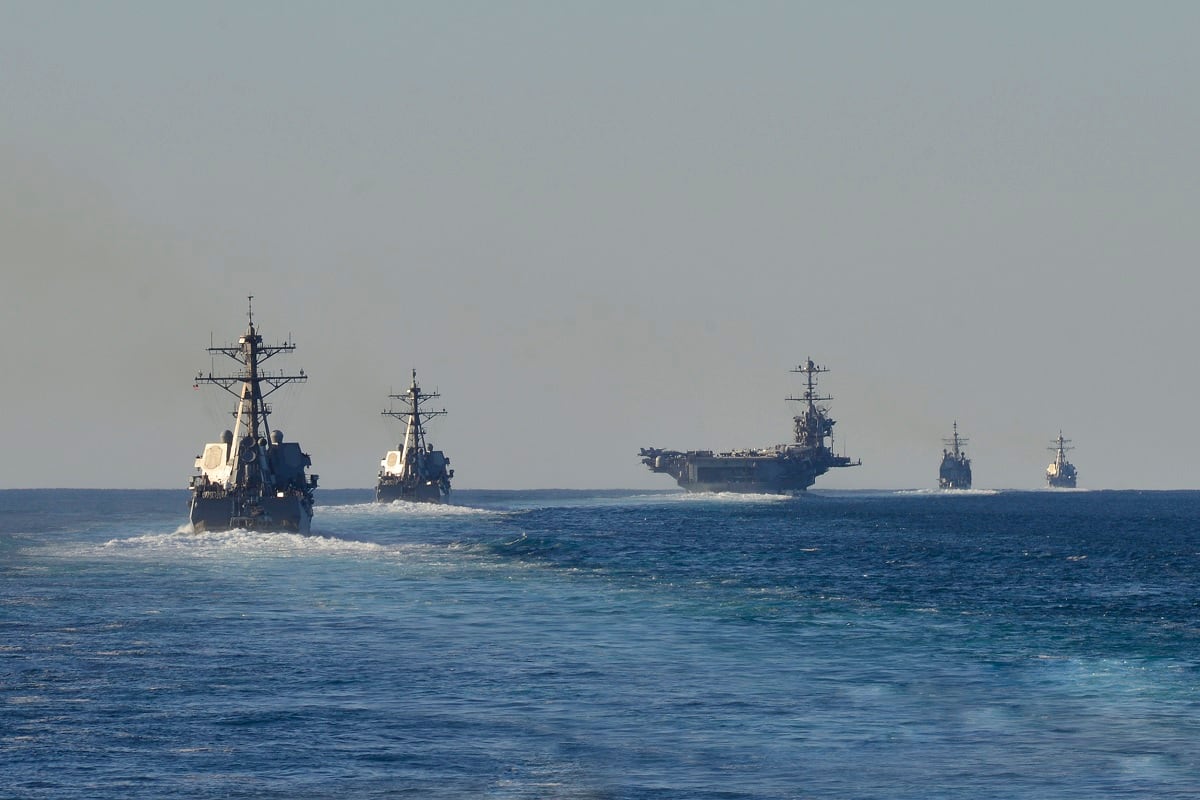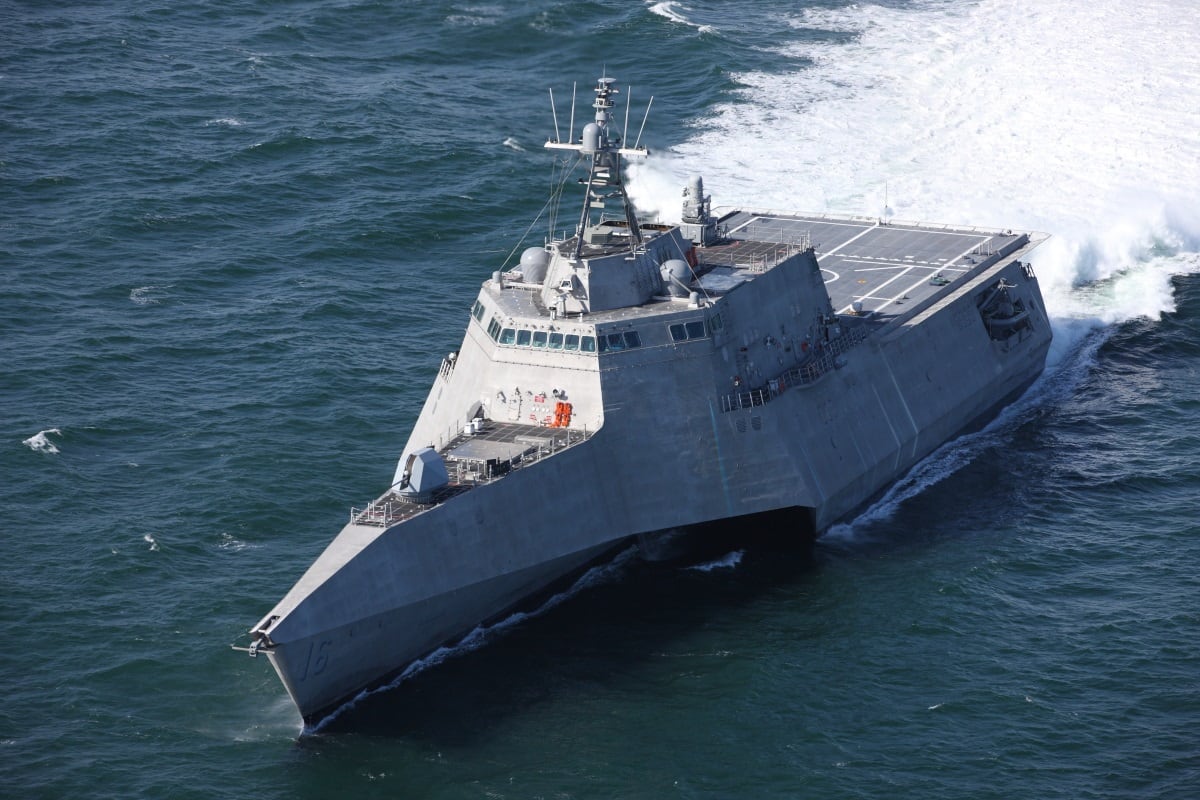WASHINGTON — The U.S. Navy will pass the 300 ships mark for the first time since 2002, according to its fiscal 2020 budget submission, a big step toward its current goal of 355 ships and a sign the service, after decades of contraction, is growing yet again.
The last time the Navy had more than 300 ships was in 2002, when it had 313, according to Naval History and Heritage Command. The Navy should be up to 314 ships by 2023, according to the Navy’s budget submission.
In total, the Navy is requesting $205.6 billion, which breaks out to $160.8 billion in base funding and a staggering $44.8 billion on overseas contingency operations funding. The OCO funding is up $36.6 billion over last year’s request and is a gimmick to avoid budget caps. The budget will need to be hashed out in Congress through a spending deal.
RELATED

The budget also marks a major step toward an unmanned future for its battle force, budgeting $400 million in 2020 for two large unmanned surface vessels, or LUSV, and $2.7 billion across the five-year projection known as the Future Years Defense Program, or FYDP. The budget calls for two LUSVs per year across the program.
The budget also calls for eight of its unmanned aerial refueling drones, the MQ-25 Stingray, with four per year starting in 2023.
The service is also asking for $359 million for unmanned undersea vehicles, which includes $182 million for the newly awarded Orca extra-large unmanned undersea vehicle. In February, the Navy announced a $43 million contract with Boeing to begin construction on four Orca XLUUVs, which will be used for a variety of unmanned mission areas including countermine, anti-submarine and anti-surface warfare.
Submarines were a big winner in this year’s budget submission, which sees the Navy planning for a third Virginia-class attack submarine in 2020 — a move long sought by lawmakers interested in boosting submarine numbers to avoid a shortfall in the 2030s. The Navy is facing a precipitous decline in attack boat inventories in the 2030s, during which the Navy is expecting to fall to 42 boats down from today’s 52.
The Navy plans to add 5,100 sailors over last year’s request, 5,015 of which are enlisted billets. In total, the service wants 340,500 sailors in 2020. Today, end strength stands at 332,904 sailors in the active Navy. Reserve end strength will take a small cut of about 100 sailors. End strength for the reserve will drop from 59,100 to 59,000 year over year.
FY20 also marks the first budget request since 2005 in which the Navy did not request a littoral combat ship, instead shifting its focus to the FFG(X) future frigate. The Navy asked for $1.3 billion for the first FFG(X) hull in 2020.
RELATED

The Navy’s 30-year shipbuilding plan is due next week, Navy officials said.
More budget highlights are as follows:
Aviation
- The Navy plans to buy 20 carrier-launched F-35C aircraft, with 120 budgeted over the Future Years Defense Program. The Marine Corps will get 10 more vertical-launched F-35Bs, with 82 programmed over the FYDP.
- The budget calls for 24 F/A-18 E/F fighters in 2020, with 84 programmed over the FYDP.
- The Navy requested six P-8A maritime patrol and reconnaissance aircraft, and is the last year of the program.
- FY20 calls for procuring 32 of the yet-to-be-named TH-57 Sea Ranger training helicopter replacement — 32, with $261 million appropriated. That breaks out to $8.15 million per helo. There are 109 programmed into the FYDP.
Ships
- The Navy is asking for three destroyers in 2020.
- Marine Corps interests are paying the shipbuilding bills this year, with 2020′s planned LPD-17 Flight II (formerly LX(R)) cut from the budget and all eight of the planned ship-to-shore connectors axed from the budget.
- The buying profile for the LPD-17 Flight II changes to zero in 2020, one in 2021, zero in 2022 and one in 2023, with two across the FYDP.
Missiles
- The Navy is asking for 90 Tomahawks, with an additional 20 of the new maritime strike variant. In total, the Navy plans to request 375 maritime strike Tomahawks over the FYDP.
- In total, the Navy is asking for 258 Tomahawk upgrade kits in 2020.
- The Navy is asking for 18 naval strike missiles, the service’s new over-the-horizon anti-ship missile destined for the littoral combat ship, with 101 programmed into the FYDP.
- The Navy is requesting 60 of the Evolved SeaSparrow Missile, which counter anti-ship missiles and can be quad-packed into a single vertical launch system cell, with 960 packed into the FYDP.
- The aviators are buying 48 long-range anti-ship missiles, with 48 per year programmed in the FYDP.
David B. Larter was the naval warfare reporter for Defense News.







